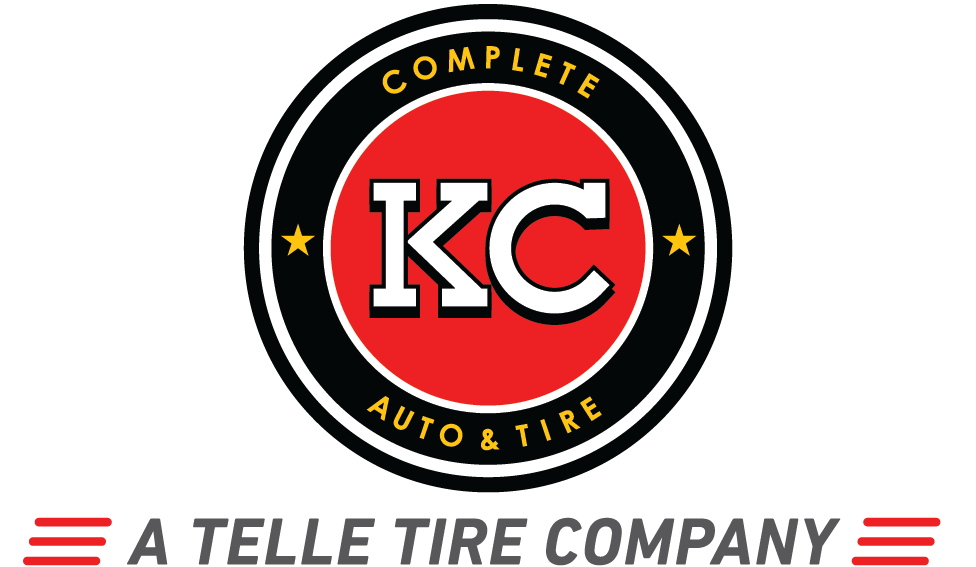Types of Winter Tires
As days grow shorter and temperatures drop, the winter season arrives, bringing more challenging driving conditions. Navigating safely through snow-covered roads requires careful driving, but there’s one component that can make all the difference – winter tires.
Winter tires, often called snow tires, are specifically engineered to offer better performance in frigid, snowy, and icy conditions. Unlike all-season tires designed for moderate weather, winter tires are fine-tuned to provide superior performance in the most challenging winter conditions.
In this guide, we’ll explore the world of winter tires, exploring the benefits and types to help you make informed decisions for safer winter driving.
Benefits of Winter Tires
Whether commuting to work or embarking on a holiday road trip, there are key advantages to having winter tires on your vehicle for the journey.
- Improved Traction and Grip: Winter tires are designed with specialized rubber compounds and tread patterns that enhance traction and grip when driving in the snow or on ice-covered roads. This superior grip helps prevent slippage and loss of control, providing added safety when driving in winter.
- Enhanced Braking Performance: Shorter braking distances are crucial for avoiding accidents in slippery conditions. Winter tires’ unique characteristics, including rubber compounds and tread patterns, significantly reduce braking distances, giving you more time to react and stop safely.
- Handling and Stability: Winter tires improve vehicle control on snowy or wet, slick surfaces. Whether navigating a sharp turn or maneuvering through heavy snow, winter tires help maintain stability and prevent skidding, keeping you in control of your vehicle.
Now that we’ve established the benefits let’s dive deeper into how winter tires achieve these advantages.
Improved Traction and Grip
When winter transforms roads into treacherous terrain, having reliable traction is crucial. Winter tires are engineered with distinct features that allow them to excel in these challenging conditions.
One of the critical design elements of winter tires is their specialized rubber compound. Winter tires are formulated with pliable rubber, even in freezing temperatures, unlike all-season tires. This flexibility ensures the tires maintain their grip on the road for consistent traction.
Additionally, winter tire tread patterns are designed with deeper grooves and unique siping patterns to effectively channel snow and slush away from the tire’s contact point, reducing the risk of hydroplaning. This improves grip on snowy, icy surfaces and significantly improves stability and control.
Winter tires also feature small, gripping edges within the tread to further enhance their ability to grip slippery surfaces. These gripping edges “bite” into the snow and ice, providing necessary traction for safe winter driving. Whether accelerating, turning, or stopping, the improved grip can make a difference in your safety on the road.
Enhanced Braking Performance
Winter conditions make safe, quick stopping difficult. However, winter tires are engineered to excel in winter braking by reducing the braking distances in these conditions compared to all-season tires.
The specialized rubber compounds used in the tire construction remain flexible in cold temperatures, allowing the tires to maintain contact with the road surface. As a result, winter tires provide consistent and reliable braking performance, even in the most freezing conditions.
The tires’ unique tread patterns also aid in providing shorter braking distances. The deep grooves and siping create more biting edges to increase friction with the road. When you apply the brakes, the edges dig into the snow or ice for better grip, leading to quicker stops and reduced risk of collisions caused by slippery conditions.
Handling and Stability
Maintaining control of your vehicle in winter conditions is vital. Winter tires excel in providing the necessary stability and handling capabilities thanks to the following features:
- Optimized Tread Patterns: As previously mentioned, winter tires feature intricate tread patterns designed to maximize traction on snow and ice. These patterns include numerous biting edges and channels for a secure grip. The added traction also allows you to confidently navigate turns and curves, minimizing the risk of skidding.
- Sipes and Grooves: The fine grooves and sipes within winter tire treads are strategically placed to enhance grip. These micro-grooves create additional gripping edges for improved stability when accelerating, turning, and braking on icy or snowy roads.
- Sidewall Construction: Winter tires often have reinforced sidewalls that provide additional support and stability, especially when cornering or maneuvering. This design feature helps prevent sidewall flexing and maintains optimal tire contact with the road surface.
Overall, the combination of advanced tread patterns, specialized rubber compounds, and reinforced sidewalls makes winter tires your best ally in maintaining control and stability during winter.
Snow Tires vs. All-Season Tires
There’s a common misconception that all-season tires are sufficient for winter driving. Although versatile and suitable for various conditions, they fall short in extreme winter conditions.
All-season tires come with some limitations. They are designed to balance performance across different seasons, but this versatility is not the greatest in winter. Here’s why all-season tires are not ideal for driving on snowy, icy roads:
- Less Traction: All-season tires lack the specialized rubber compounds and tread patterns of winter tires. As a result, they offer reduced traction on snow and ice, making it challenging to maintain control.
- Longer Braking Distances: All-season tires do not provide the same braking performance as winter tires. Their stopping distances on slippery surfaces are longer, increasing the risk of accidents.
- Reduced Handling: When it comes to handling and stability on snowy or icy roads, all-season tires are less effective. They are more prone to skidding and loss of control, especially during sharp turns or sudden maneuvers.
- Limited Sidewall Support: All-season tires typically have less robust sidewalls than winter tires. This can result in sidewall flexing and reduced stability, particularly in challenging winter conditions.
While all-season tires offer convenience for year-round use, they are not the best choice for winter driving safety. Opting for dedicated winter tires is the smart choice to maximize your safety and control during the winter months.
Which Winter Tires to Choose?
Different options are available when you decide to change your tires for the winter season. There are three primary categories of winter tires, each catering to specific needs and conditions. Choosing the right type ensures optimal performance when driving in snow or other dangerous conditions.
Studded Winter Tires
Studded winter tires are designed for extreme icy conditions. They feature metal studs embedded in the tire tread that grip onto icy surfaces with remarkable tenacity. Here’s what to know about studded winter tires:
Pros:
- Exceptional Ice Grip: Studded tires excel in icy conditions, providing unrivaled traction on frozen roads.
- Reduced Slippage: Studded tires minimize slipping and sliding on icy surfaces, enhancing overall control.
Cons:
- Noise: The metal studs can produce a noticeable noise when driving on dry pavement, which can be bothersome.
- Road Damage: Studded tires may cause minor damage to road surfaces, which is a concern in some regions.
Studless Winter Tires
Studless winter tires, also known as “ice and snow” tires, are designed for versatility in various winter conditions. They do not feature metal studs but incorporate advanced rubber compounds and tread patterns that offer optimal performance. Here’s what to know about studless winter tires:
Pros:
- Versatile Performance: Studless winter tires perform well in various winter conditions, from light snow to icy roads.
- Quieter Ride: Unlike studded tires, studless tires offer a quieter and smoother ride on dry pavement.
Cons:
- Less Effective on Ice: They may not provide the same traction on pure ice as studded tires.
- Shorter Lifespan: The softer rubber compounds wear out faster than all-season or summer tires and may require more frequent replacement.
- Performance Trade-Off: Studless tires may not perform as well as all-season or summer tires on dry or wet roads. Keeping these on your vehicle throughout the year may cause reduced handling and braking performance in non-winter conditions.
Performance Winter Tires
Those who own sports cars or high-performance vehicles don’t have to compromise on winter performance with performance winter tires.
Key Characteristics:
- Sporty Handling: Performance winter tires strike a balance between winter performance and maintaining the sporty characteristics of high-performance vehicles.
- Enhanced Grip: These tires are designed to provide exceptional traction and handling even in cold, snowy conditions.
Choosing the right type of winter tire is crucial based on your specific driving needs and the conditions you anticipate encountering during the winter season.
Popular Winter Tire Brands
Choosing a trusted brand can make a significant difference in your driving experience when it comes to winter tires. Below are some of the most popular winter tire brands known for reputation, key features, and standout models:
Michelin: Michelin is a globally recognized tire brand known for its commitment to quality and innovation, and their winter tire offerings are no exception. Models like the Michelin X-Ice Xi3 are designed to provide excellent grip and stability in winter conditions. Michelin’s winter tires are praised for their long-lasting performance and reliability.
Bridgestone: Bridgestone is another reputable name in the tire industry. Their Blizzak series of winter tires are highly regarded for their exceptional performance on snow and ice. These tires feature a unique Multicell compound that enhances traction and braking in cold conditions.
Goodyear: Goodyear’s Ultra Grip series of winter tires are designed to deliver reliable winter performance. These tires offer a good balance of traction and handling, making them popular for drivers in snowy regions. The Goodyear Ultra Grip Ice WRT is one of their standout models.
Pirelli: Pirelli is a renowned tire brand with a strong focus on performance. Their winter tire lineup includes options like the Pirelli Winter Sottozero Series II, known for its excellent grip on snowy and icy roads. Drivers of high-performance vehicles favor Pirelli tires.
Continental: Continental is recognized for its innovative tire technology. Their WinterContact SI tires are designed to provide confident handling and traction in winter conditions. Continental tires are often praised for their durability and performance.
These are just a few popular winter tire brands known for their quality and performance. When choosing winter tires, it’s advisable to consult with a trusted tire expert to select the brand and model that best suits your vehicle and driving needs.
Be Winter-Ready with Quality Tires from Telle Tire
As winter approaches, it’s essential to prioritize safety on the roads. Winter tires offer various benefits, including improved traction, enhanced braking performance, and better handling and stability. Don’t compromise on your and your passengers’ safety by relying on all-season tires in harsh winter conditions.
At Telle Tire, we understand the importance of quality winter tires for safe and worry-free winter driving. Our wide selection of winter tires includes options from some of the most trusted brands in the industry. Whether you need studded, studless, or performance winter tires we have you covered. Visit one of our convenient locations or contact us today to ensure you’re equipped with the best winter tires for the upcoming season. Don’t let winter catch you unprepared, either! We can also conduct winter maintenance services to keep you safe on the snow.


